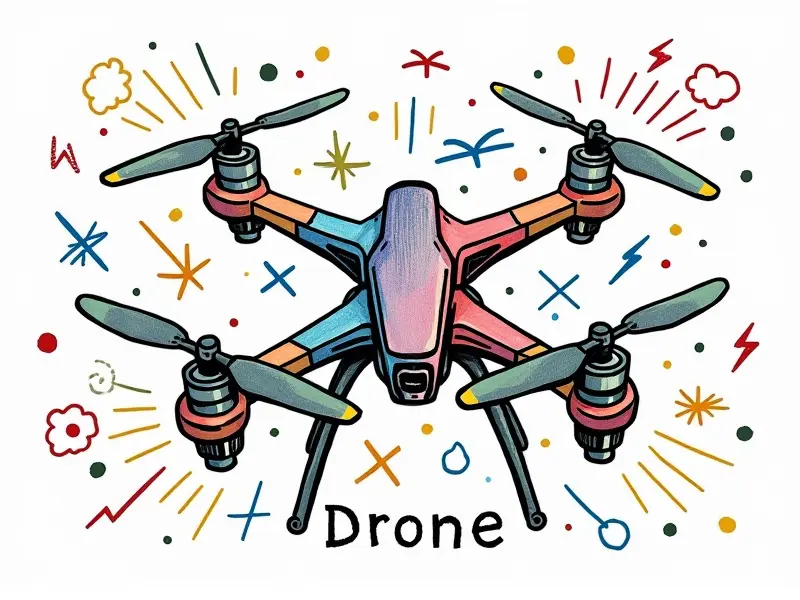Repair drone noise levels

How to Quiet Your Noisy Drone Fast
If you're dealing with a noisy drone, the good news is that there are several quick and effective ways to reduce its noise levels. One of the most common issues is excessive vibration caused by propellers or motors. To address this, start by checking if your propellers are perfectly balanced; even a slight imbalance can cause significant noise.
Another immediate fix could be adjusting the pitch settings on your drone's motor controllers to reduce RPMs slightly without compromising performance. This simple tweak often results in quieter operation while maintaining stability and control.
Reduce Drone Noise Levels Easily
Reducing drone noise levels requires a combination of hardware modifications and software adjustments. Start by replacing standard propellers with quieter, high-quality models designed for reduced vibration. These props typically feature advanced materials that dampen sound waves more efficiently than cheaper alternatives.
In addition to upgrading your propellers, consider installing rubber or silicone dampers between the motor mounts and frame. These dampers absorb vibrations before they can transfer to the rest of the drone, significantly lowering overall noise levels.
Fixing Loud Drones in Minutes
If you need a quick fix for loud drones, there are several DIY methods that yield immediate results without requiring extensive modifications. One such method involves applying silicone lubricant to the motor shafts and bearings. This not only reduces friction but also dampens noise caused by mechanical wear.
Another effective short-term solution is wrapping foam or rubber sleeves around your drone’s propeller guards. While this may slightly increase weight, it significantly muffles unwanted sounds produced during flight operations.
Silent Flight: Lower Drone Decibels
To achieve silent flight, focus on optimizing both hardware and software configurations for minimal noise output. Start by selecting motors with integrated dampening features or adding custom-made motor mounts that isolate vibrations effectively.
Software-wise, use advanced tuning tools to fine-tune your drone’s control algorithms. By adjusting parameters like PID gains and throttle sensitivity, you can achieve a smoother flight profile with less audible disturbance.
Tips to Muffle Your RC Drone
- Upgrade Propellers: Invest in premium propeller sets that are engineered for quieter performance. These props often come with built-in sound dampening features.
- Add Dampers: Install silicone or rubber dampers between motor mounts and frame to absorb vibrations before they can cause noise.
- Lubricate Motors: Apply a thin layer of high-quality lubricant to motor shafts and bearings to reduce friction and noise caused by mechanical wear.
Easy Fixes for Noisy Quadcopters
Noisy quadcopters can be a nuisance, but with the right approach, you can quickly turn them into silent flyers. Begin by checking if your motor screws are tightly secured; loose screws can cause rattling noises during flight.
Additionally, consider replacing stock propellers with quieter models designed for reduced vibration and noise. This is often one of the most impactful changes you can make to achieve near-silent operation.
FPV Racing Drones: Achieving Near-Silent Flight
For FPV racing drones, achieving near-silent flight requires a more specialized approach. Start by selecting motors and propellers specifically designed for low-noise performance in high-speed conditions.
In addition to hardware upgrades, optimize your drone’s frame design by incorporating sound-absorbing materials like foam or rubber into key areas prone to vibration transmission.
Tame the Buzz: Quieting FPV Drones
Quieting FPV drones involves a combination of strategic part selection and creative installation techniques. Choose propellers with aerodynamic profiles that minimize turbulence and noise during high-speed flights.
To further reduce buzzing sounds, apply damping patches to critical components like motor mounts and frame joints. These patches work by absorbing vibrations before they can propagate through the drone’s structure.
Making Your RC Helicopter Less Noisy
Reducing noise in RC helicopters often hinges on fine-tuning mechanical elements like rotors and gearboxes. Start by replacing standard rotor blades with quieter, more aerodynamic models that reduce air turbulence.
Additionally, lubricate the gearbox thoroughly to minimize friction-induced noise. This simple step can significantly enhance the overall quietness of your helicopter during flight operations.
Silent Sky: Techniques for Quieting RC Helis
- Airfoil Rotor Blades: Use rotor blades with airfoil profiles to reduce drag and turbulence, leading to quieter performance.
- Lubricate Gearbox: Apply high-quality lubricant to the gearbox to minimize mechanical noise caused by friction between moving parts.
- Vibration Dampers: Install dampers on critical components like motor mounts and frame joints to absorb vibrations before they can cause noise.
Cut the Clatter: Tips for Quieter FPV Racing Drones
To cut down clattering noises in FPV racing drones, focus on optimizing both aerodynamics and structural integrity. Start by selecting propellers that are designed for high-speed flights with minimal noise output.
Additionally, reinforce your drone’s frame to prevent flexing or bending under stress. A rigid frame not only improves stability but also reduces unwanted vibrations that contribute to higher noise levels.
Conclusion
Making your noisy drone quieter involves a combination of hardware modifications and software optimizations tailored to the specific type of drone you are working with. Whether it’s an FPV racing drone, RC helicopter, or quadcopter, there are practical steps you can take to achieve near-silent flight operations. By following these tips and techniques, you’ll be able to enjoy smoother, quieter flights while maintaining optimal performance.

